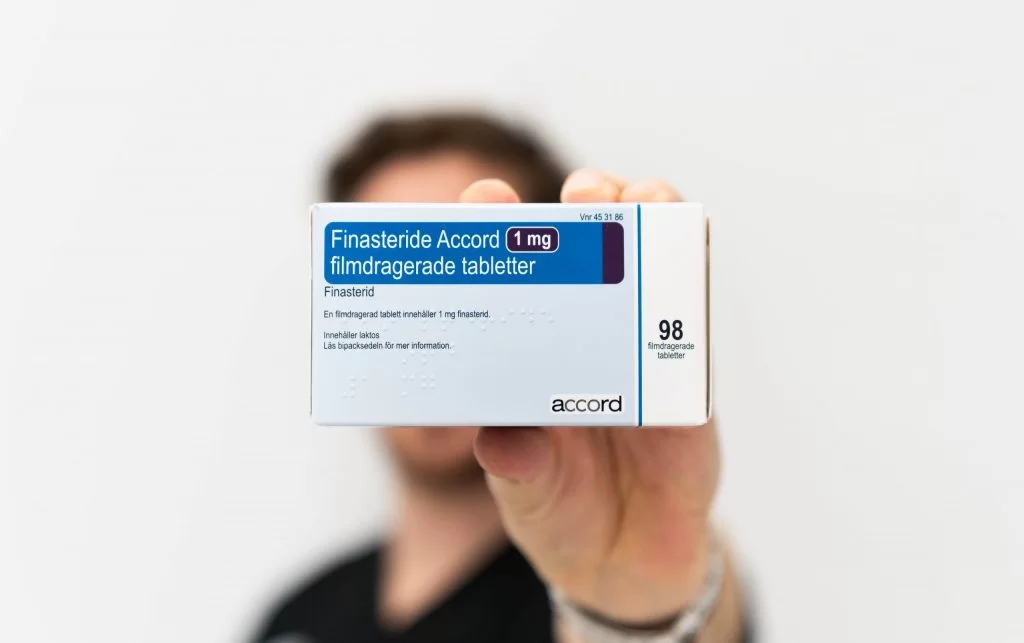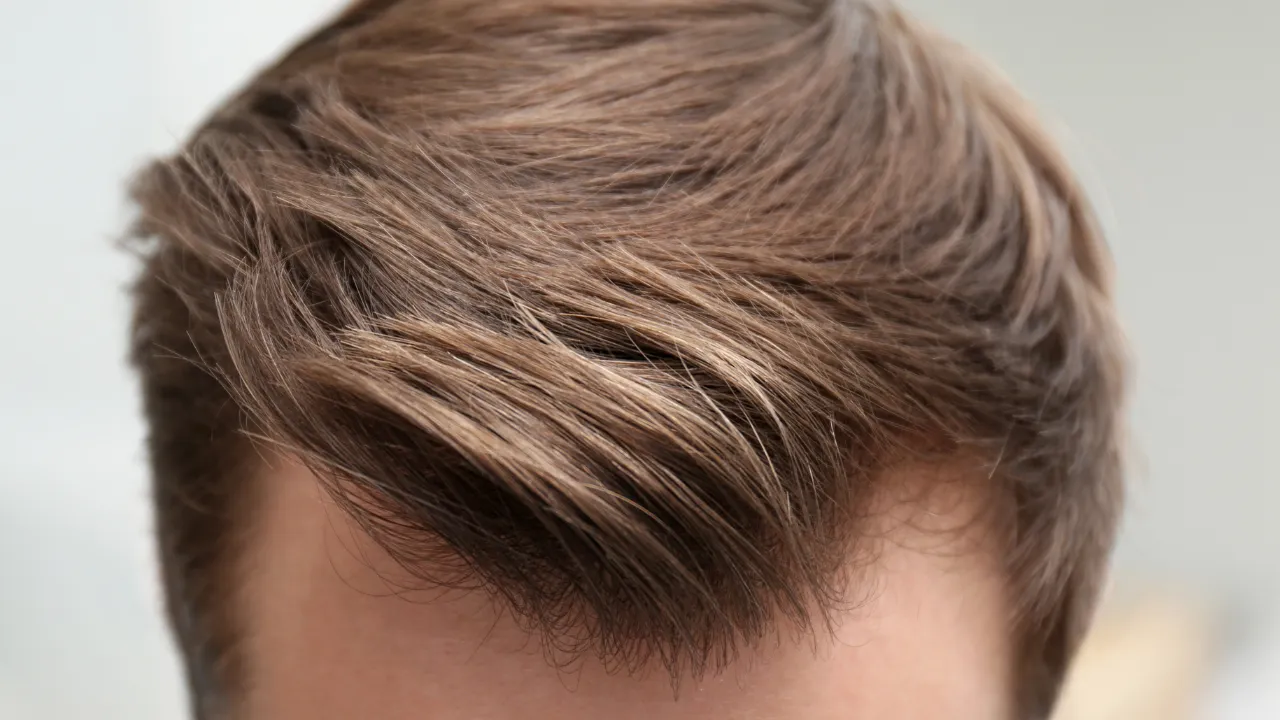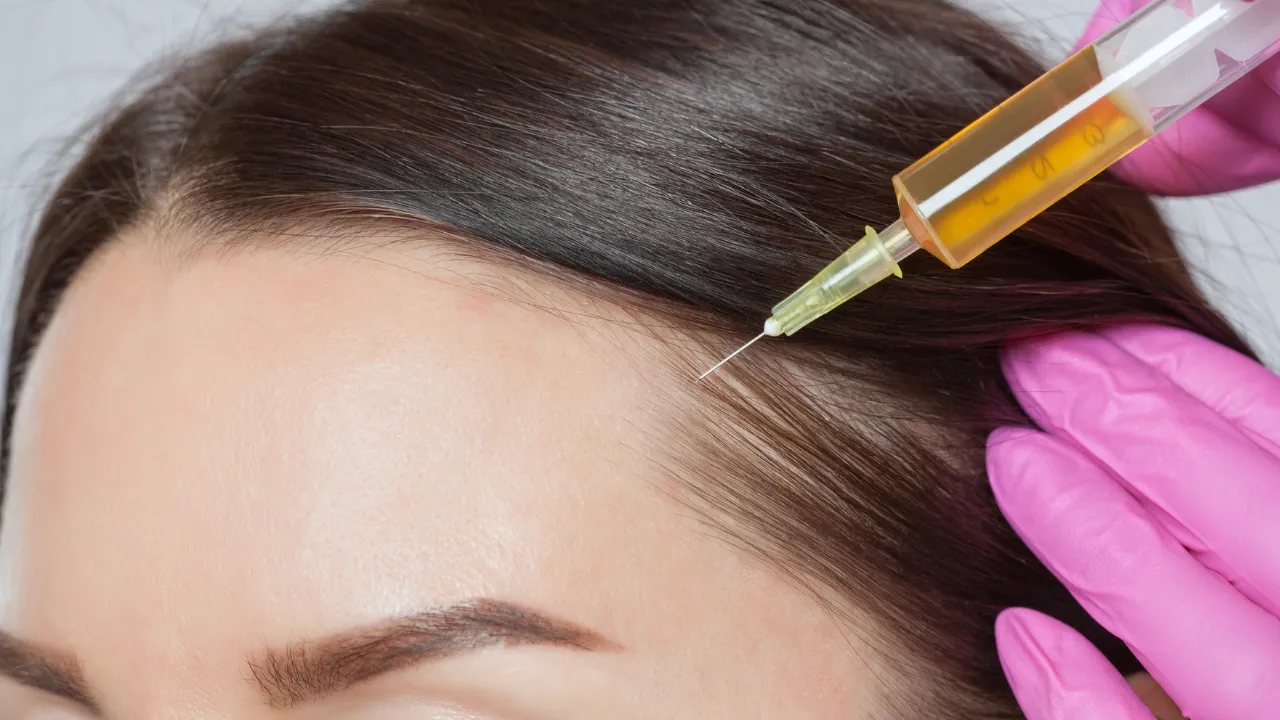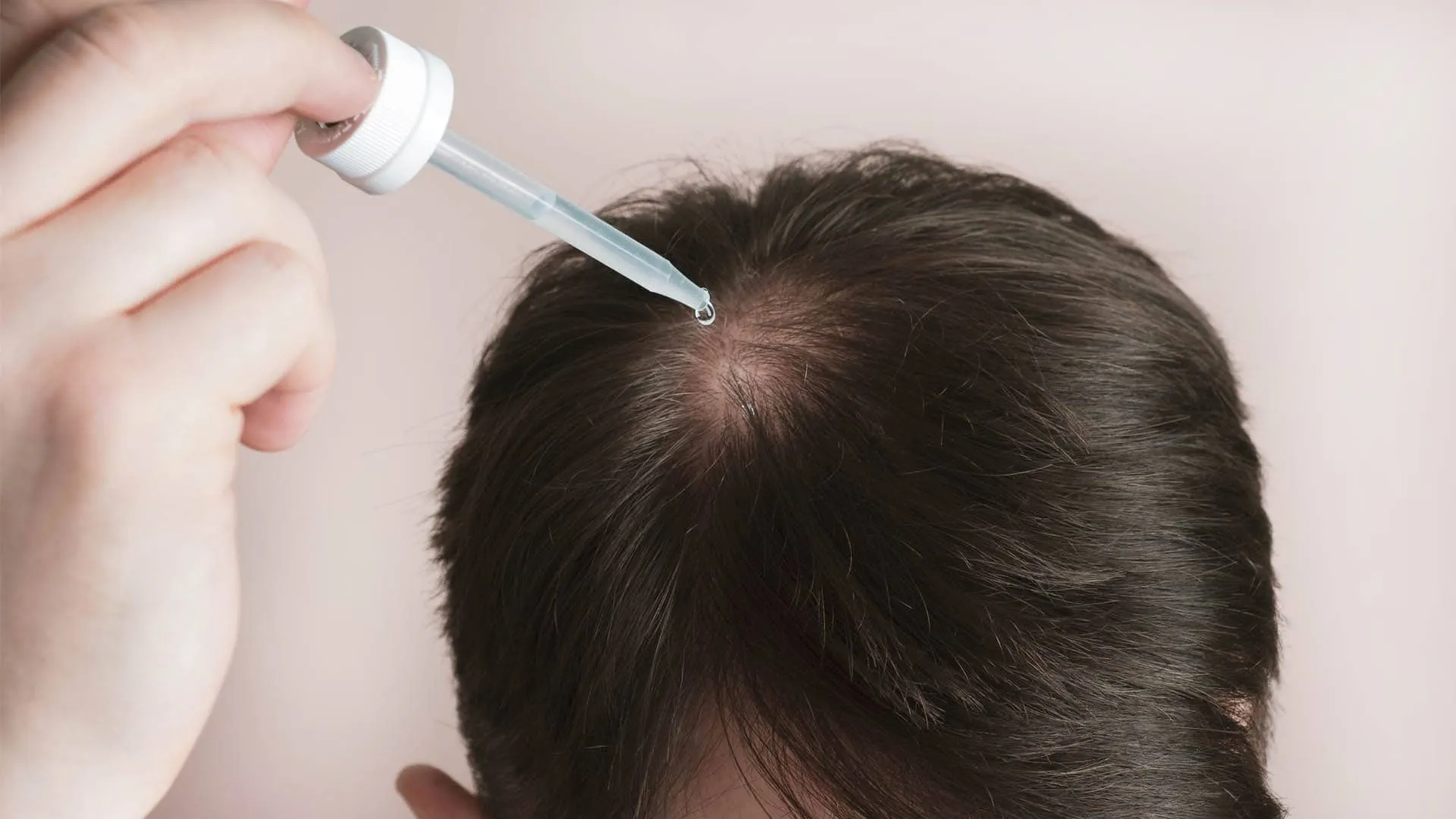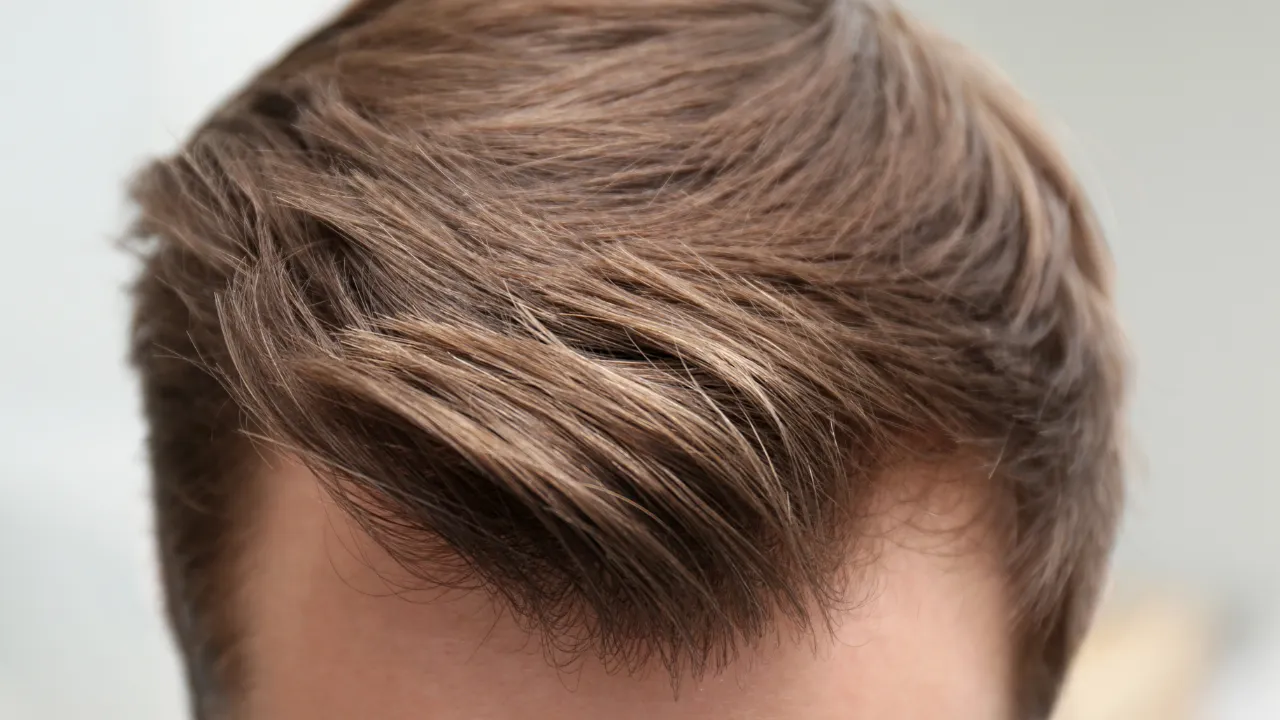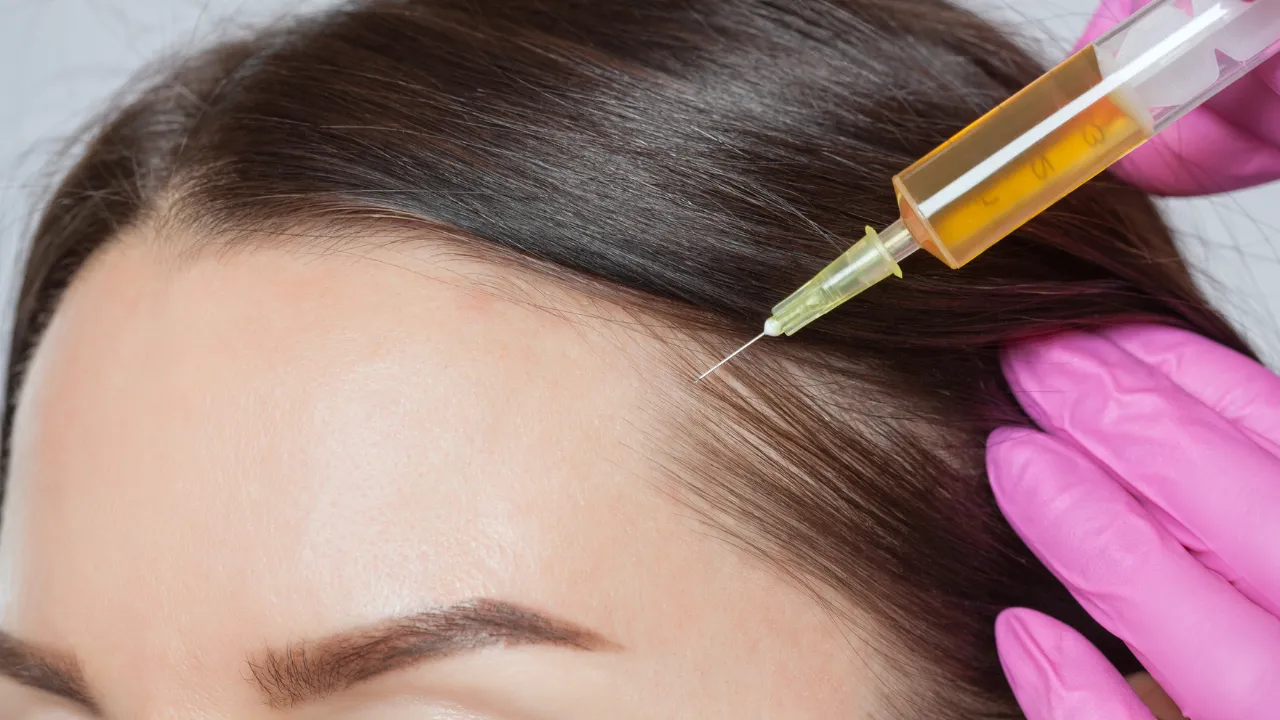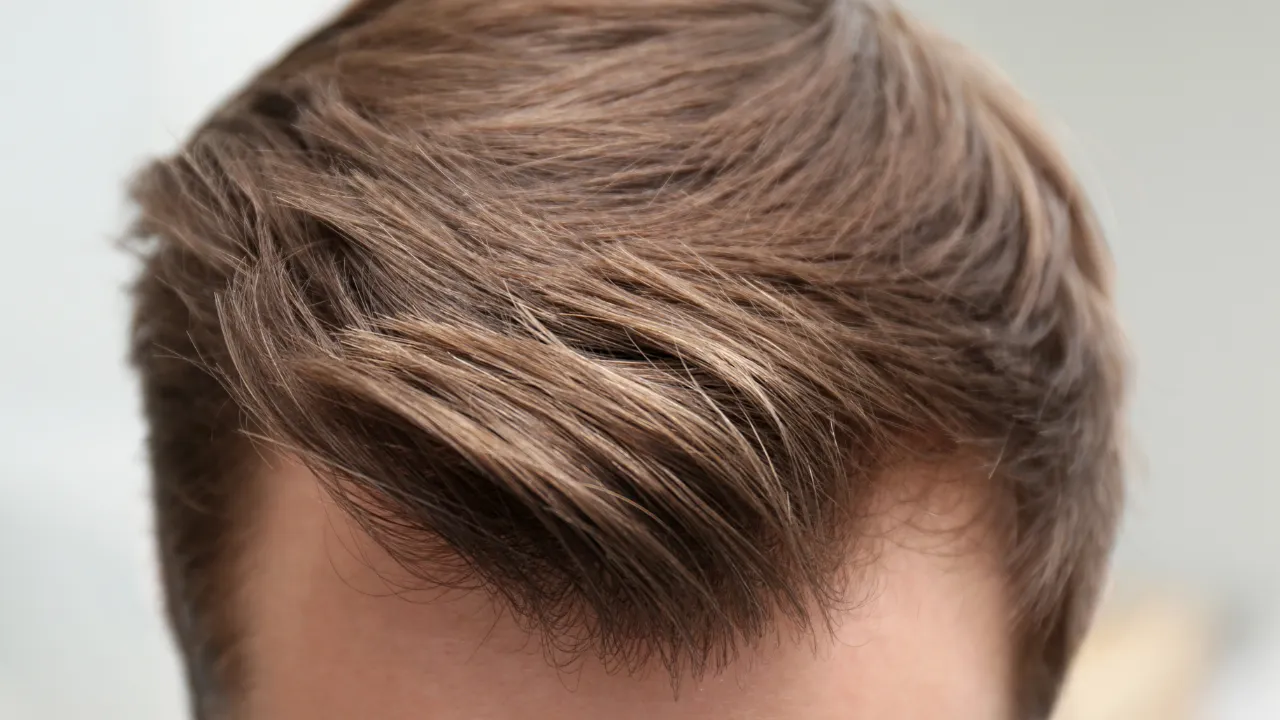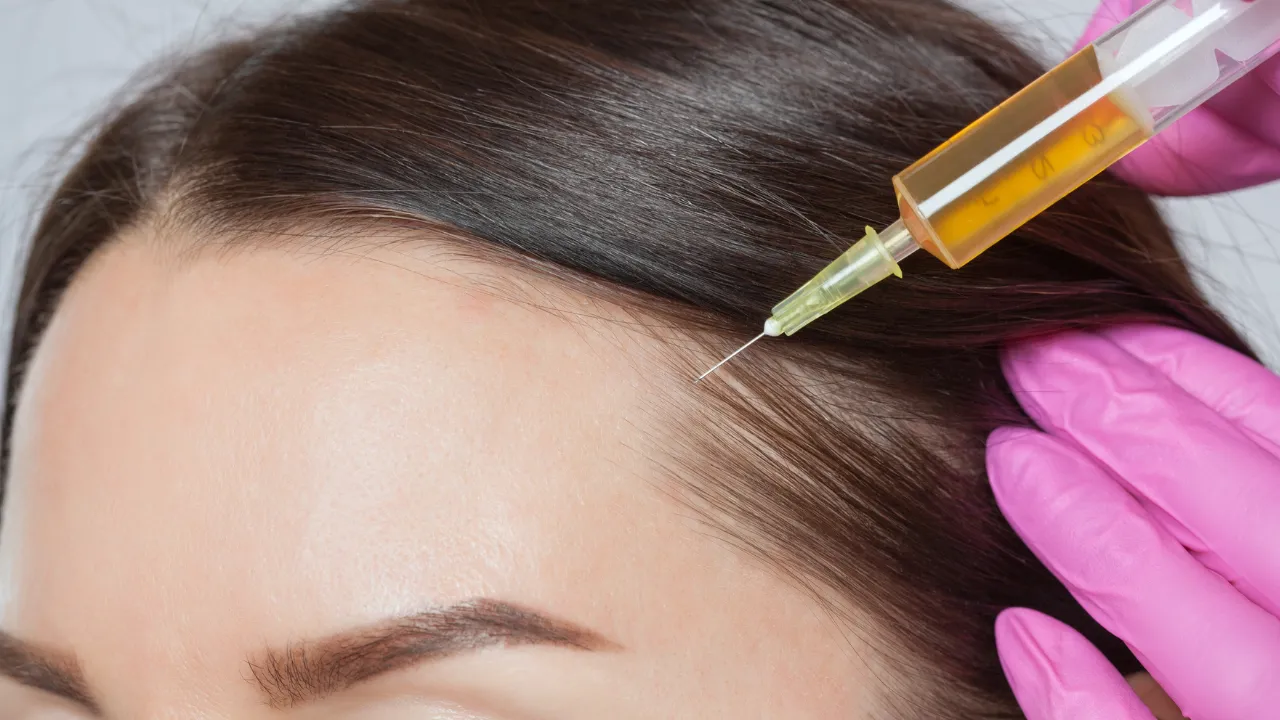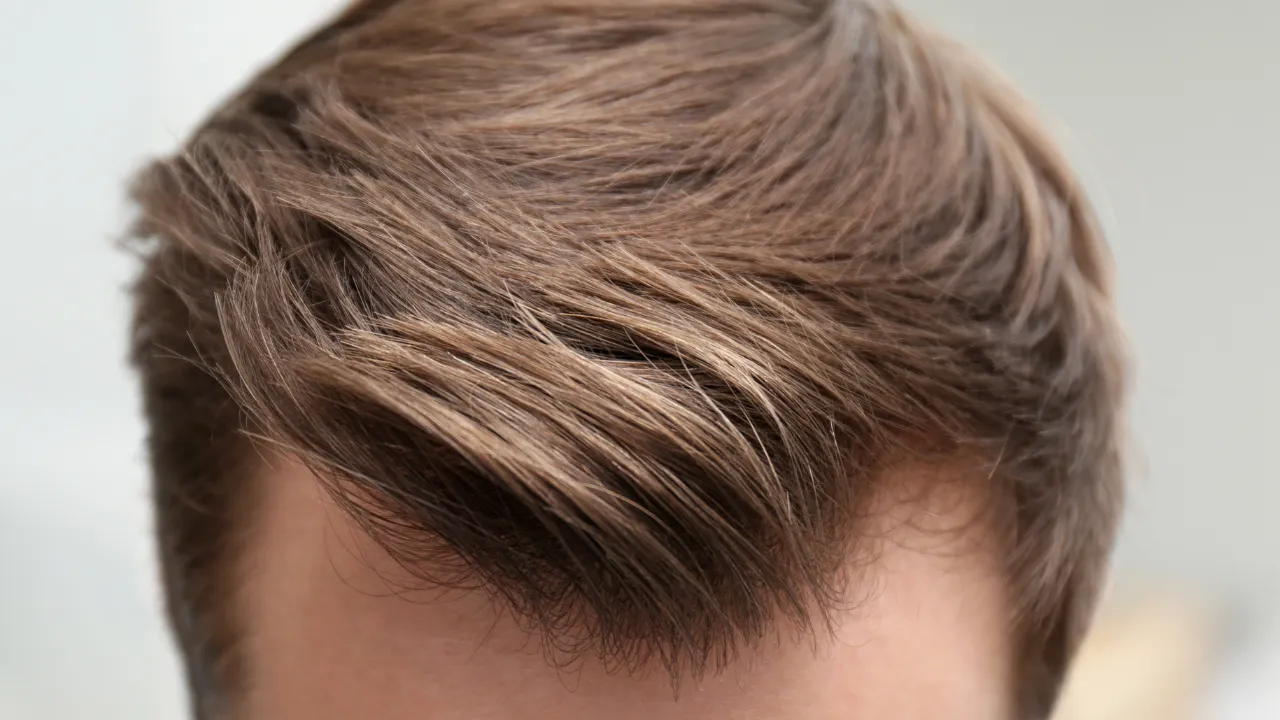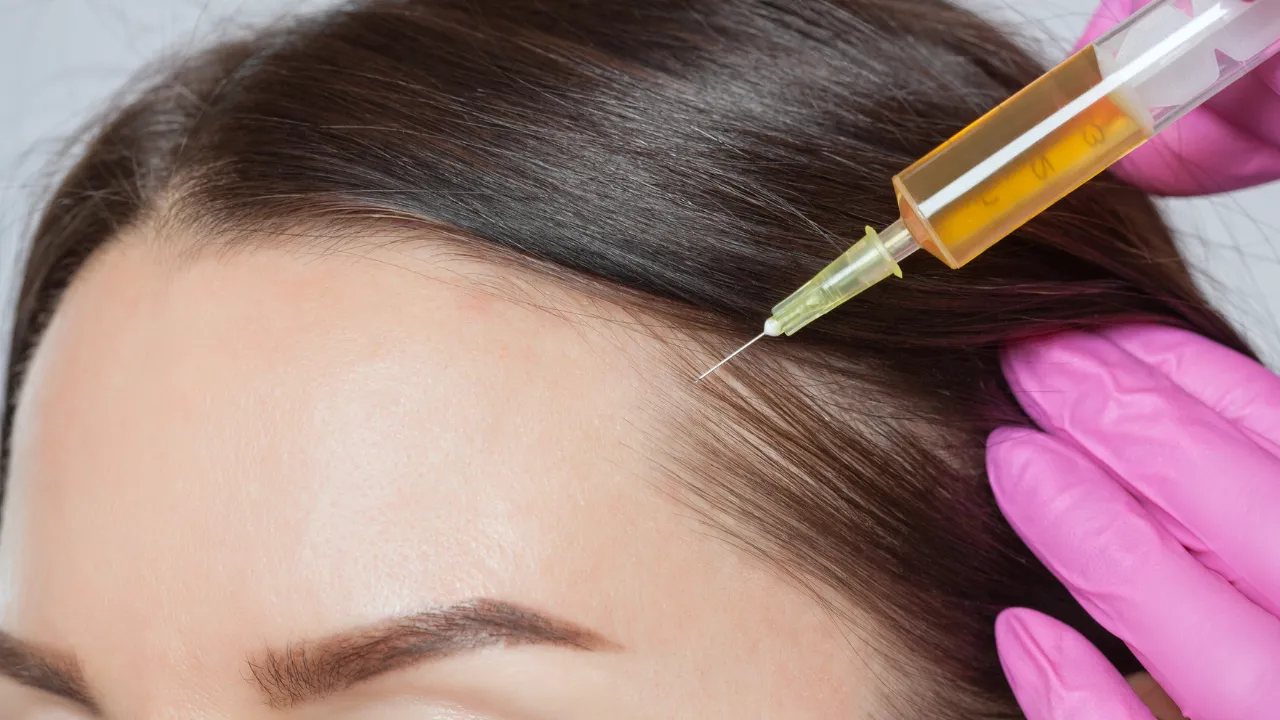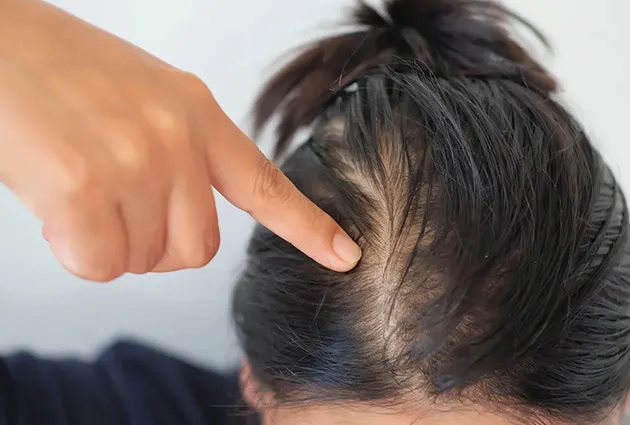Table of Contents
ToggleAGA hair loss, also known as androgenetic alopecia, is the most common cause of hair thinning in both men and women. At Kopelman Hair, we specialize in advanced diagnosis and personalized treatments to help patients understand, manage, and restore their hair. This guide explores what AGA hair loss is, its causes, and effective treatment options.
Key Takeaways
- AGA hair loss, or androgenetic alopecia, is a genetic condition triggered by hormonal changes, most commonly affecting the crown and hairline in men and the crown in women.
- Early diagnosis using tools such as trichoscopy and hair pull tests helps determine the subtype and stage of AGA, guiding the selection of appropriate treatment.
- FDA-approved treatments, such as minoxidil and finasteride, can slow the progression and support regrowth, while hair transplants are suitable for patients with stable hair loss and a strong donor area. Lifestyle factors like scalp care, stress management, and nutrition play a supporting role in long-term hair preservation.
- Consulting a hair restoration specialist like Dr. Kopelman ensures a tailored approach that balances medical treatment with ongoing monitoring and emotional support.
What Is AGA Hair Loss?
AGA Hair Loss Meaning and Pattern
AGA hair loss refers to androgenetic alopecia, a condition driven by both genetics and hormones. It causes gradual thinning of the hair in a specific and predictable pattern. In men, this usually begins at the temples and crown. In women, it typically appears as a widening of the area or overall thinning at the top of the scalp.
The term “androgenetic alopecia AGA” combines the hormonal influence of androgens with hereditary hair loss tendencies. The condition progresses slowly, often unnoticed at first, but can lead to significant hair reduction over time if left untreated.
Recognizing Subtypes of AGA
Androgenetic alopecia does not present the same way in every patient. There are several clinical subtypes that influence how the condition progresses and responds to treatment. These variations are often seen during diagnosis and can affect management choices.
Common AGA subtypes include:
- Female Pattern Hair Loss (FPHL): Diffuse thinning across the crown with preserved frontal hairline.
- Diffuse Unpatterned Alopecia (DUPA): Widespread thinning without a clear pattern; affects donor areas too.
- Frontal Fibrosing Alopecia (FFA): Hairline recession with inflammation, often seen in postmenopausal women.
Understanding your specific pattern helps professionals like Dr. Kopelman create personalized treatment strategies.
What Does AGA Hair Loss Look Like?
Men typically notice a receding hairline or bald spot at the crown. Over time, these areas may merge, resulting in more extensive baldness. This is known as the Norwood pattern and commonly referred to as male pattern baldness. Women, on the other hand, experience diffuse thinning on the crown, often classified using the Ludwig scale.
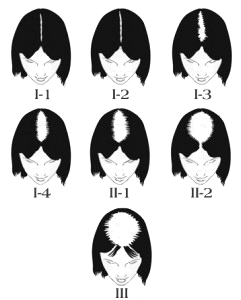
Unlike other types of hair loss, AGA creates a consistent pattern that helps specialists like Dr. Kopelman diagnose the condition early. Miniaturization of hair follicles is a key visual clue—hairs grow back finer, shorter, and less pigmented.
What Causes AGA Hair Loss?
Genetic and Hormonal Triggers
Understanding what causes androgenetic alopecia involves examining both genetic and hormonal factors. If one or both parents experienced hair loss, there’s a strong chance it will be passed on. This hereditary hair loss is often triggered by the activity of hormones like dihydrotestosterone (DHT).
A key element in AGA is the enzyme 5-alpha-reductase, which converts testosterone into DHT. DHT binds to receptors in hair follicles, causing them to shrink and shorten the hair growth cycle. Over time, this hormonal process leads to progressively thinner and shorter hairs. Targeting DHT through medical treatment helps slow this cycle and preserve existing follicles.
Differences Between Androgenic and Other Hair Loss
Androgenic alopecia differs from other types of hair loss in both cause and appearance. For example:
- Telogen effluvium causes sudden, diffuse shedding due to stress or illness.
- Alopecia areata leads to patchy hair loss triggered by an autoimmune reaction.
- Scarring alopecias destroy the follicle entirely and do not follow a pattern.
Hair loss from androgenic alopecia develops gradually and follows a predictable pattern, unlike the abrupt shedding seen in telogen effluvium.
Recognizing these differences is crucial for accurate diagnosis and selecting the appropriate treatment for genetic baldness.
Recognizing AGA Symptoms and Patterns
Early Stage Signs
Early stage androgenetic alopecia may not be obvious. Men might notice a higher forehead or slower regrowth at the temples, while women may see more scalp visibility through their part. Hair may feel less dense or resilient when styling.
In both cases, early diagnosis increases the chances of slowing the process. At Kopelman Hair, we use scalp imaging and progression tracking to catch subtle changes before they become severe.
How AGA Progresses Over Time
Without treatment, AGA follows a clear pattern. Men typically move from a receding hairline to full crown thinning. Women’s thinning may stabilize or gradually worsen across the central scalp. In advanced stages, the follicles produce only fine vellus hairs or stop growing hair altogether.
While the rate of progression varies from individual to individual, most patients experience noticeable changes within a few years. Catching this early allows for more effective intervention.
How AGA Is Diagnosed Clinically
AGA diagnosis begins with a thorough clinical exam and a discussion of personal and family history. Specialists assess the pattern, density, and rate of shedding to rule out other causes. At Kopelman Hair, early diagnosis plays a key role in developing an effective treatment plan.
Diagnostic tools may include:
- Trichoscopy: A magnified scalp exam that reveals miniaturized hairs and peripilar signs.
- Hair Pull Test: A gentle pulling method to assess the severity of shedding.
- Scalp Biopsy: Used when diagnosis is unclear, especially in women with diffuse hair loss.
These methods help confirm the diagnosis and tailor the treatment to your specific condition.
Can AGA Hair Loss Be Reversed?
What Influences Regrowth Outcomes
AGA hair loss is progressive, but early intervention can improve outcomes. In many cases, it’s possible to slow or partially reverse the process. Treatments work best on follicles that haven’t completely shut down.
Factors influencing regrowth include:
- Age and stage of hair loss
- Consistency with treatment
- Overall health and hormone levels
- Family history
Some risk factors may increase the likelihood or speed of AGA progression. These include early onset of puberty, elevated androgen levels, and a strong family history on either side. Individuals with aggressive early-stage androgenetic alopecia may require a more intensive treatment plan. Identifying these risk factors allows for earlier, more targeted intervention.
Treatment Options for AGA
What Do Clinical Guidelines Recommend?
Most treatment approaches for androgenetic alopecia are based on published dermatological standards. Organizations like the American Academy of Dermatology (AAD) and the International Society of Hair Restoration Surgery (ISHRS) regularly publish protocols for diagnosis and management.
These guidelines support the use of FDA-approved medications like minoxidil and finasteride as first-line treatments. They also recommend early intervention to preserve follicles before they become inactive. At Kopelman Hair, we follow these best practices while adapting them to each patient’s unique needs.
Medications and Topicals
The most common medical treatments for androgenetic alopecia are:
- Minoxidil (topical): Increases blood flow and stimulates follicles.
- Finasteride (oral): Blocks DHT to reduce follicle shrinkage.
Both are FDA-approved and work best when started early. These medications aim to promote hair growth and are often used as part of a long-term strategy to maintain density.
For patients looking for a non-surgical treatment for genetic hair loss, these options remain the first step before considering transplants or advanced therapies.
Surgical and Transplant Solutions
When medication isn’t enough, hair restoration surgery is an effective option. Techniques include:
- FUT (Follicular Unit Transplantation): A strip of scalp is removed and grafted.
- FUE (Follicular Unit Extraction): Individual follicles are harvested and placed.
At Kopelman Hair, Dr. Kopelman utilizes advanced microsurgical techniques to achieve natural-looking results. Transplants are most effective for those with stable hair loss and good donor hair density.
Dr. Kopelman is a board-certified hair restoration surgeon with over 20 years of clinical experience, specializing in advanced transplant techniques and scalp preservation strategies.
Emerging Therapies and Research
In the United States and globally, new approaches are being explored through clinical trials. Some of these studies examine alternative treatments, including platelet-rich plasma (PRP), stem cell injections, and laser therapies. A recent study found that low-level laser therapy devices may improve hair density when used consistently.
These innovations may benefit patients with male pattern hair loss who are seeking alternatives to medication or surgery.
Managing AGA Long-Term
Daily Habits for Hair Health
While no lifestyle change can cure AGA, some habits support better outcomes:
- Use gentle, sulfate-free shampoos
- Avoid tight hairstyles and heat styling
- Reduce scalp inflammation through regular washing
- Eat a balanced diet with iron, protein, and biotin
Consistency is key. Even small daily changes can preserve hair health over time.
Real Experiences and What Works
Many patients at Kopelman Hair report success combining medical and lifestyle strategies. While results vary, the most satisfied patients are those who:
- Start early
- Stick to their plan
- Check in regularly for progress evaluations
If you’re losing hair and unsure whether it’s AGA or another condition, early consultation can make a significant difference. Restoring confidence and encouraging steady hair regrowth is often possible with consistent care and proper guidance.
When to Seek Professional Help
Signs You Should See a Specialist
It’s time to consult a specialist if you notice:
- Gradual thinning at the crown or temples
- Slower regrowth after shedding
- Family history of hair loss
- Visible scalp in strong lighting
A dermatologist or hair restoration expert can confirm if you’re in the early stage of androgenetic alopecia and help build a treatment strategy.
Emotional Support and Coping
Hair loss often affects confidence and emotional well-being. It’s common to feel frustration or stress, especially when appearance changes rapidly. This experience affects both males and females and can impact personal and professional life.
At Kopelman Hair, we understand these concerns. Addressing AGA isn’t just about physical results—it’s about helping you feel like yourself again. Treatment includes both medical and emotional support options tailored to your goals.
Schedule a personalized consultation with Dr. Kopelman to explore the most effective treatment options for your hair restoration. Take the next step toward lasting results with expert care tailored to your needs.


